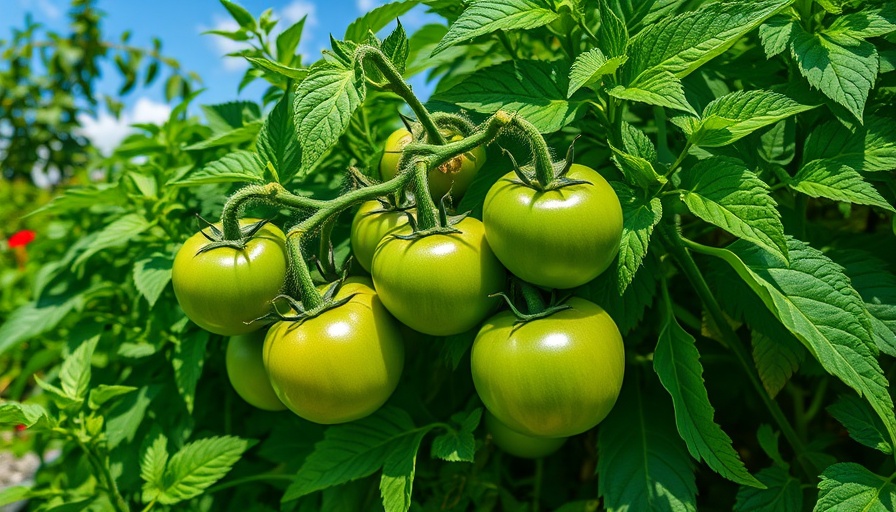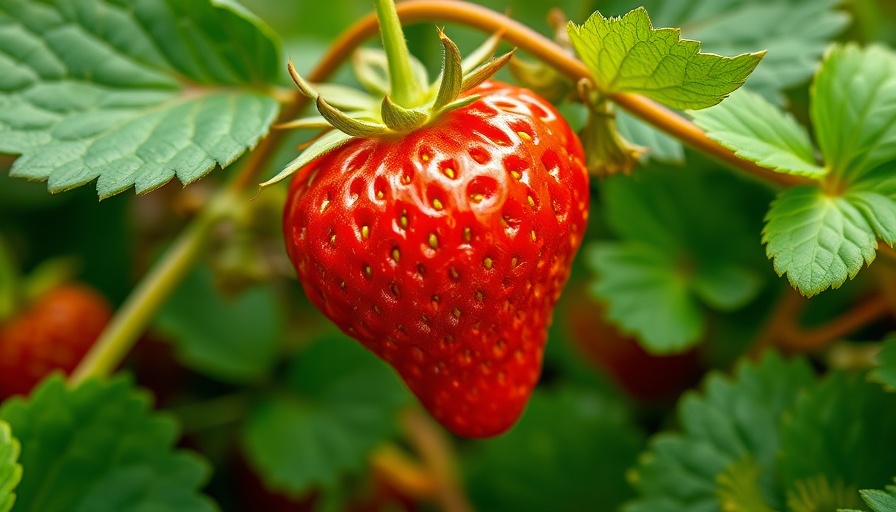
What Happens When You Water Seedlings With Different Liquids?
In the realm of gardening, the choices we make about how we nourish our plants can have profound impacts on their growth and health. A recent exploration highlighted the varying results of watering seedlings with five different liquids, each boasting distinct properties and benefits. The findings are not just a testament to the importance of nutrition in plant health, but also provide valuable insights for Okanagan gardeners eager to optimize their practices.
In 'I Watered Seedlings with 5 Different Liquids… Only ONE Worked!', the video covers the fascinating outcomes of using various liquid fertilizers, guiding us to delve deeper into the implications for gardening practices.
Understanding Plant Nutrition: The Liquids Tested
In the experiment, five different watering methods were trialed, including:
- Miracle-Gro All-Purpose Fertilizer
- Organic Promix All-Purpose Fertilizer (pH adjusted)
- Regular Tap Water
- Reverse Osmosis Water
- Organic Fertilizer (without pH adjustment)
The comparison yielded fascinating results. While Miracle-Gro is often viewed with skepticism due to its synthetic components, it proved to yield robust plant growth. In contrast, reverse osmosis water, while pure, caused significant decline in plant vitality, highlighting the critical role that nutrients play.
Why pH Levels Matter in Watering Your Plants
One of the key takeaways from the study is the importance of pH levels in plant care. Water with a high pH can lead to nutrient lockout—making it challenging for plants to absorb necessary nutrients. For Okanagan gardeners, it’s vital to test your water's pH before applying fertilizers. The right balance is crucial: a pH around 5.5 to 6.5 fosters optimal nutrient availability, ensuring that our beloved plants can thrive.
The Nutritional Dance: Synthetic vs. Organic
While organic fertilizers are praised for being environmentally friendly, they may not perform as effectively in certain conditions. The results from the experiment showed that the organic options needed proper pH adjustments to prevent nutrient depletion. This provoked a significant discussion in the gardening community regarding the efficacy of organic versus synthetic fertilizers. While organic fertilizers are indeed beneficial, they require proper handling to be effective.
Common Misconceptions: Miracle-Gro and Soil Health
A common myth surrounding Miracle-Gro is that it harms plants. However, many experienced gardeners have illustrated that by following dosage recommendations, Miracle-Gro can produce healthy, thriving plants. This points out that responsible use of fertilizer, be it organic or synthetic, can lead to great success in our gardens.
Future Trends in Gardening: Embracing Science
As the gardening landscape evolves, embracing scientific insights into plant care will prove beneficial. The experiment revealed that an understanding of the microbial environment is just as essential as the fertilizers applied. For instance, microbial activity can fluctuate based on the nutrient source, impacting plant health. Awareness of these dynamics could lead to more informed choices, fostering resilient gardens.
Supporting Healthy Growth: Practices for Okanagan Gardeners
The experiment underscores the adaptability required for successful gardening in the Okanagan. Techniques such as bottom watering are effective, but understanding the water’s composition and nutrient levels is essential. Here are some practical tips for gardeners:
- Test Your Water: Regularly test the pH levels of your tap water.
- Choose Fertilizers Wisely: Assess whether synthetic or organic fertilizers align with your gardening goals.
- Adjust pH if Necessary: Experiment with adjusting pH levels to optimize nutrient uptake.
- Observe Your Plants: Regularly monitor for signs of nutrient deficiency or excess.
These mindful practices can enhance plant health and adaptability, ensuring bountiful harvests.
Final Thoughts: Gardening is a Journey
In conclusion, experimenting with different watering methods provides key insights into the science of plant care. The results from watering seedlings with five different liquids offer numerous considerations for Okanagan gardeners. It’s a gentle reminder that understanding the interplay between water, nutrients, and pH levels can lead to fruitful gardening experiences.
If you’re looking to refine your gardening techniques and ensure healthy plants, experimenting with the types of watering techniques and fertilizers you use can be incredibly beneficial. Discover what works best for your garden!
 Add Row
Add Row  Add
Add 




Write A Comment